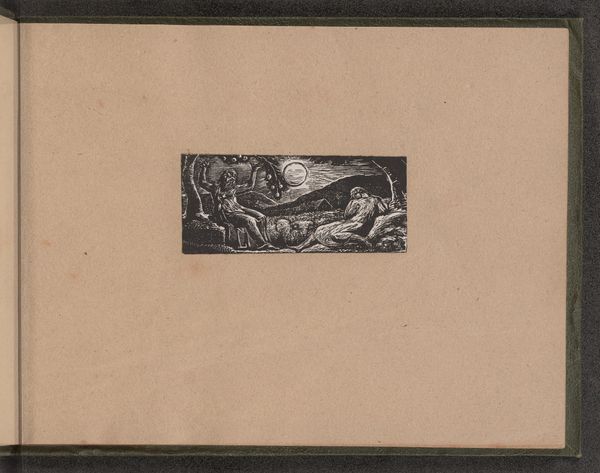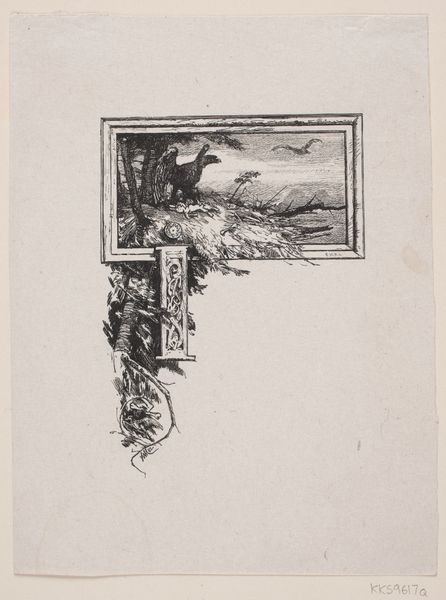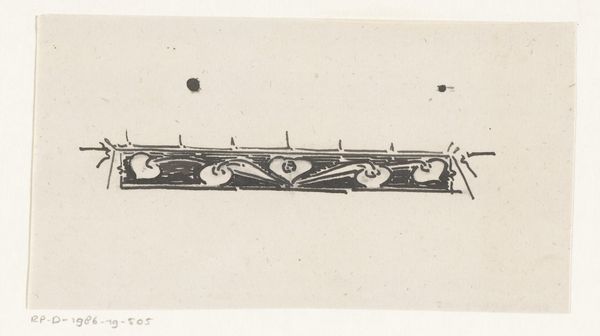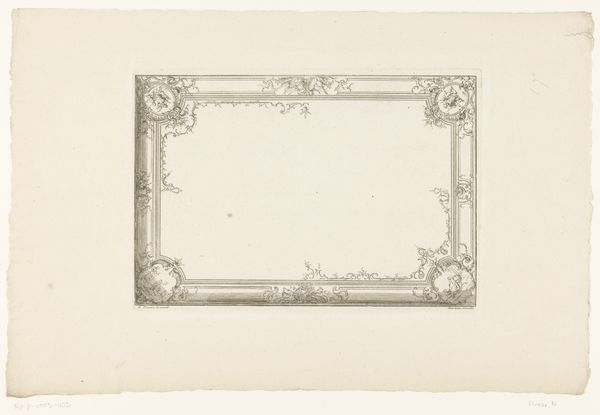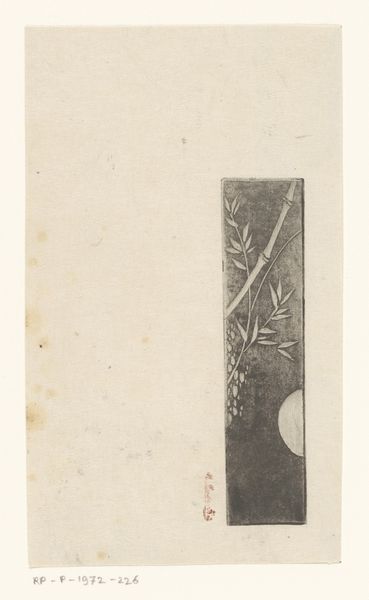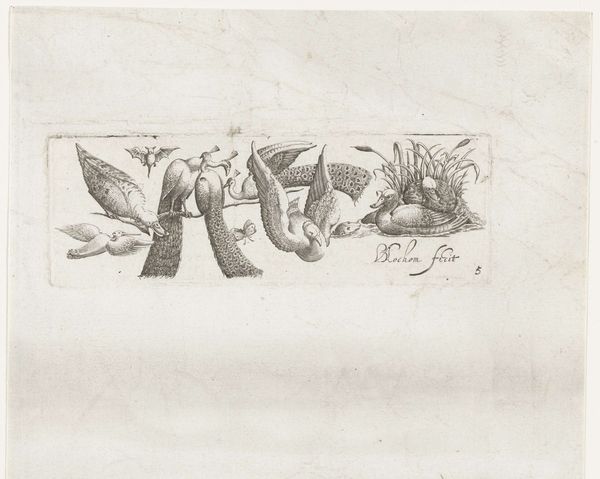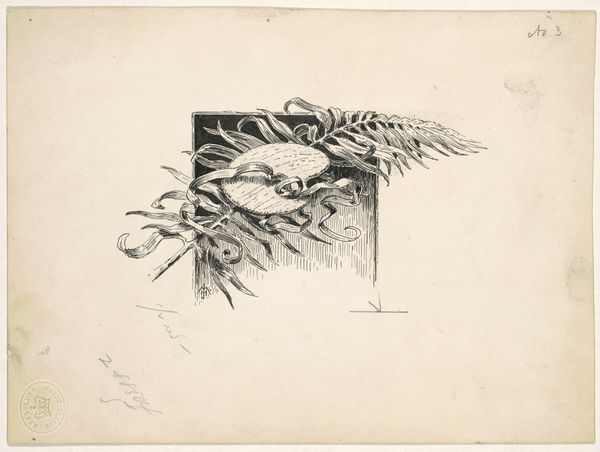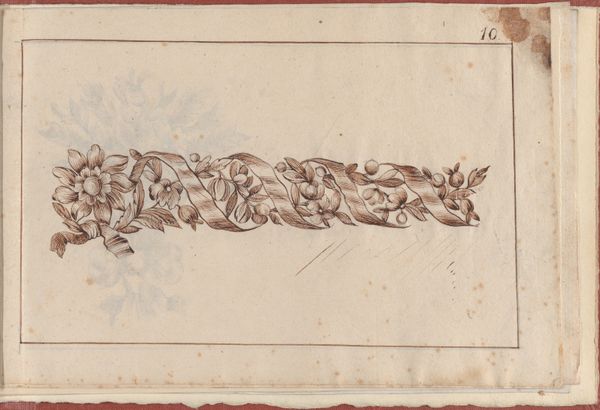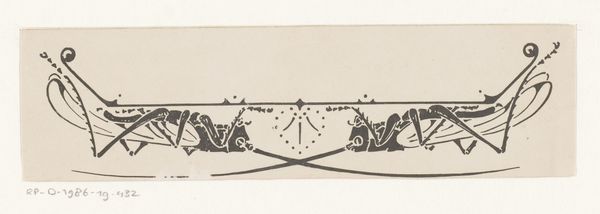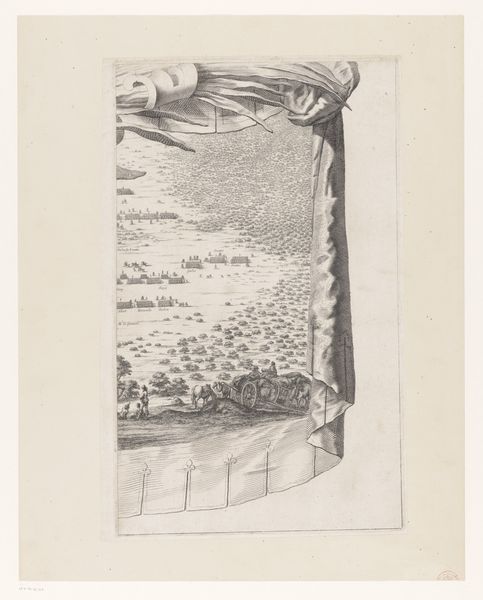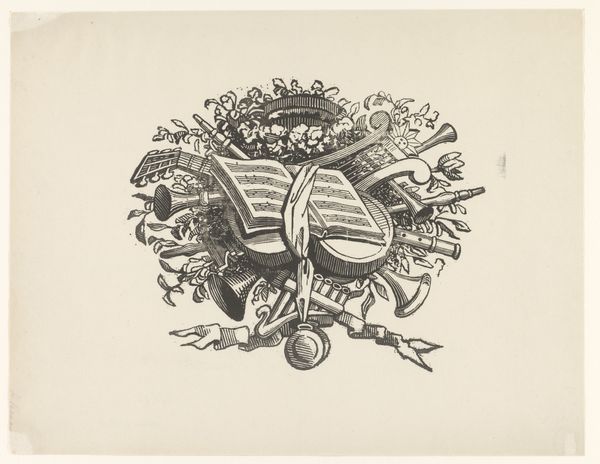
drawing, graphic-art, print, engraving
#
drawing
#
graphic-art
# print
#
line
#
engraving
Dimensions: image (irregular): 4.6 × 11.11 cm (1 13/16 × 4 3/8 in.) sheet: 9.53 × 13.65 cm (3 3/4 × 5 3/8 in.)
Copyright: National Gallery of Art: CC0 1.0
Curator: Let's turn our attention to this engraving, “Index,” created in 1892 by James Henry Moser. My first impression is of delicate formality. The stark rectangle almost feels like an invitation into a story yet to be written, doesn’t it? Editor: Indeed. I'm drawn to the process; look at the lines—laborious, controlled. Engraving on metal demands an artisan’s precision and physical exertion. What purpose did it serve? Was it mass-produced? Intended as a decorative element? The high blank space suggests a utilitarian object of some kind. Curator: I find that blank space tantalizing! Consider the wreath. A visual language we've inherited – representing accomplishment, status, or even mourning depending on context. Those fluttering ribbons speak of celebration. The potential for memorial is strong in its iconography, despite its commercial origins. Editor: Absolutely. And the deliberate choice of material – a medium like engraving speaks to its function as part of broader systems of print and design, influencing consumption. Each impression represents someone’s labor and intended commercial distribution. Think about what the paper stock conveys about production costs! Curator: I agree. But perhaps there is also an implied subtext here – that this index is also an indication or record that implies permanence and commemoration, or is used in celebration as decoration to make an important statement about how events are understood over long durations. Editor: The scale indicates a rather immediate utility: the consumer who purchased or used it. To consider its afterlife we should assess distribution networks for understanding labor processes and social consumption for the 1890s. Curator: Considering its lasting appeal, Moser's "Index" reveals much. A meditation, perhaps, on both personal memory and broader historical narratives that continues today. Editor: An exploration that connects art's materiality and manufacture to culture. Thank you!
Comments
No comments
Be the first to comment and join the conversation on the ultimate creative platform.
